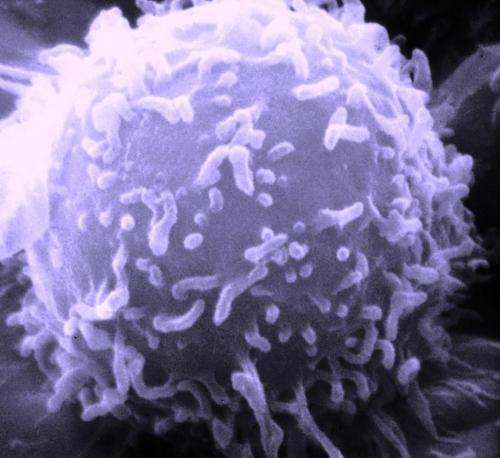Researchers find out what cancer cells are hungry for

Growing tumour cells are always hungry. Researchers of prof. Reuven Agami's group at the Antoni van Leeuwenhoek have developed a method that uncovers for individual tumours which amino acid is most limiting an thus most needed to keep the tumour growing. Differential ribosome codon reading (diricore) makes it possible to aim for tumour starvation by specific amino acid deprivation. Their paper is published in Nature on February 15th.
Human cancer cells use most of their energy and nutrients for division and survival, and often exhaust one or few amino acids, to a limiting level. Uncovering limiting amino acids in tumours can be used for therapy, as further restriction will limit tumour growth. However, it is extremely hard to find out which one is most limiting.
Reuven Agami: "Amino acid vulnerability is tumour-specific and patient specific, but now we can measure restrictive amino acids in almost every tumour. Agami together with his colleagues Dr. Fabrizio Loayza-Puch and Dr.Koos Rooijers, make two Œsnapshots - one in the tumour tissue and one in the normal tissue - of RNA-ribosome complexes, where proteins are produced. RNA is a molecule that contains the instructions for the protein that is to be built. A ribosome can read those instructions and carry them out by linking the amino acids - of which the protein is composed - in the right order. Agami: "The difference between the first and the second snapshot shows the ribosomes that pile up at the RNA instructions for the amino acid that is most restrictive. They are waiting there longer for new supplies, until they can move on."
From theory to clinical practice
Once the restrictive amino acid in a tumour is known, further restrain of supply of that amino acid will impact tumour development in a specific manner. This can be done by adding a substance that shuts off amino acid production, or by turning off genes for the production of this particular amino acid. Keeping the amino acid at low levels in the circulation by injecting an enzyme that breaks down the amino acid, or even a special diet, is another way. The group of Agami has demonstrated this principle for one such restrictive amino acid in breast cancer cells using genetic tools. Indeed, turning off the production of a restrictive amino acid reduced tumour growth in animal models.
As of now there is no clinical treatment yet based on the diricore technique, and this might take a couple of years. Agami: "There are all kinds of inspiring possibilities, which weare going to try hopefully with the help of Dutch funds for this research."
More information: Tumour-specific proline vulnerability uncovered by differential ribosome codon reading, DOI: 10.1038/nature16982













